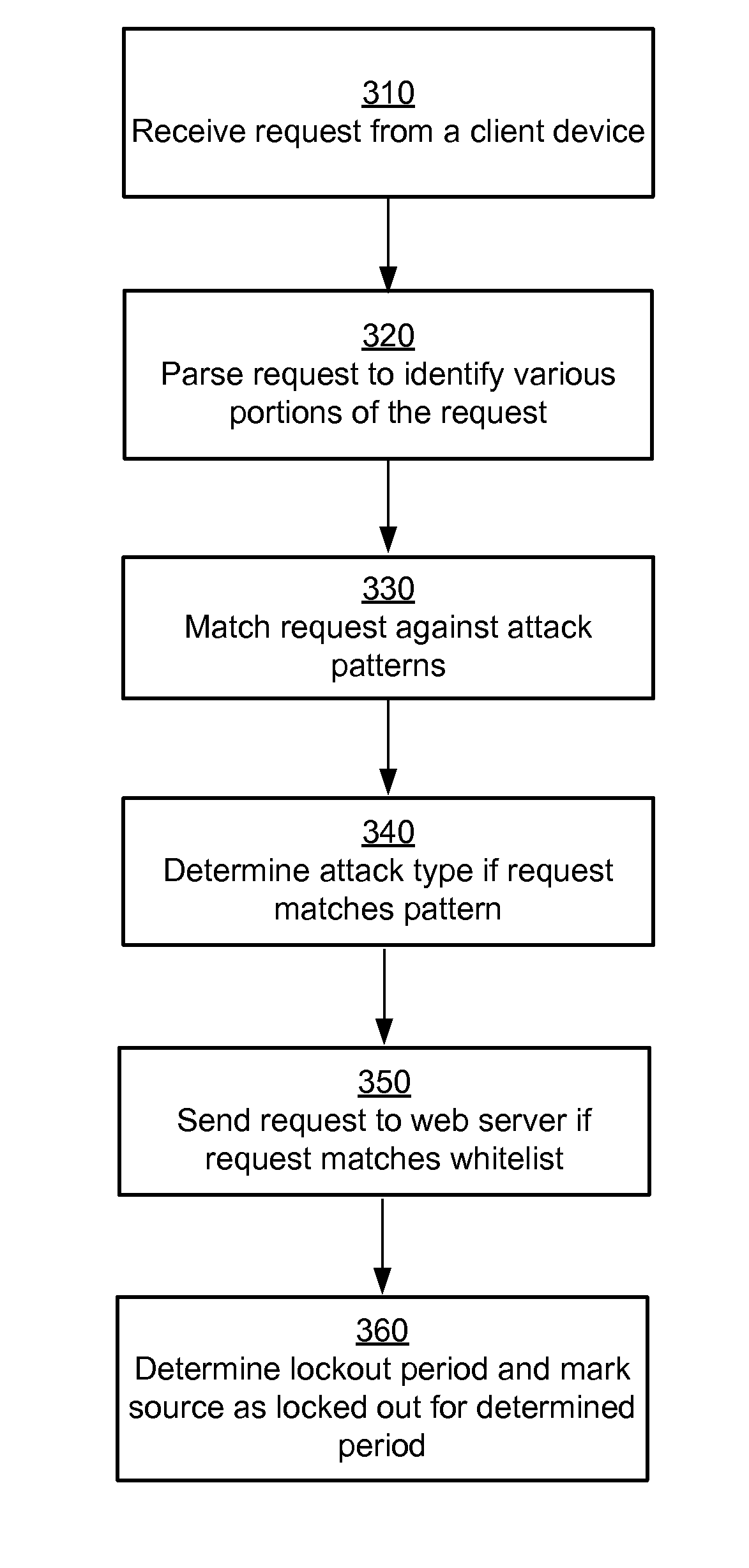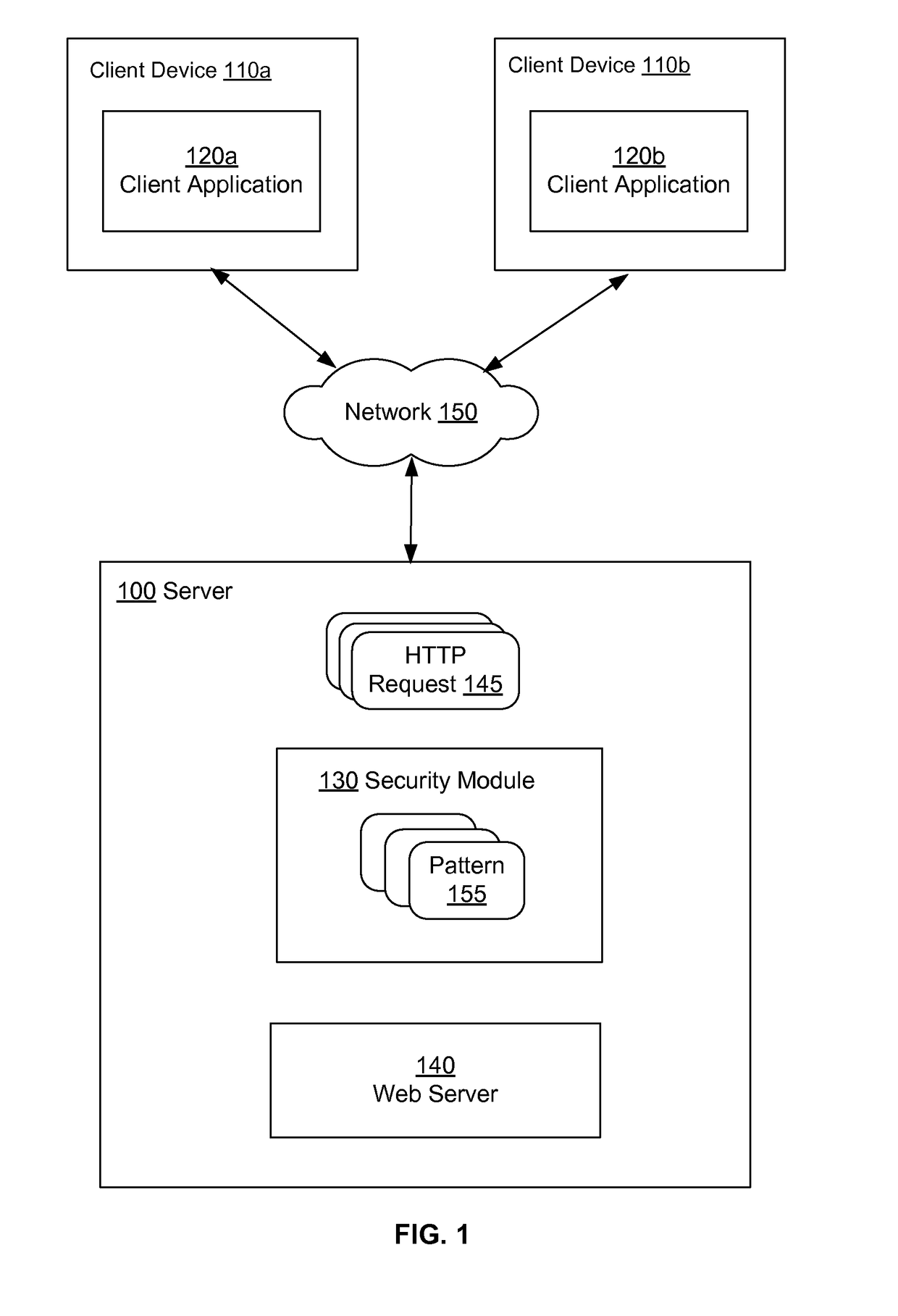Identifying Attack Patterns in Requests Received by Web Applications
a request and request technology, applied in the field of security of web applications, can solve problems such as potential harm to business or enterprise, attacks are often not detected, and malicious users use a variety of different types of attacks
- Summary
- Abstract
- Description
- Claims
- Application Information
AI Technical Summary
Benefits of technology
Problems solved by technology
Method used
Image
Examples
Embodiment Construction
[0011]Described embodiments identify potential attacks to a system made via requests to web applications executing on the system, for example, via hypertext transfer protocol (HTTP) requests. The system stores information describing attack patterns that can occur in different parts of an HTTP request. The system identifies different parts of an incoming HTTP request and matches them against the stored patterns. If the system determines that a request matches a stored attack pattern, the system requires further verification of authenticity of the source before processing further requests from the source.
[0012]In one embodiment, the system determines the source of the input HTTP request and locks out the source of the input HTTP request for a particular time period. Accordingly, the system does not process requests from the locked out source for the lockout period. After the lockout period if the source again sends a request that matches an attack pattern, the system locks the source ...
PUM
 Login to View More
Login to View More Abstract
Description
Claims
Application Information
 Login to View More
Login to View More - R&D
- Intellectual Property
- Life Sciences
- Materials
- Tech Scout
- Unparalleled Data Quality
- Higher Quality Content
- 60% Fewer Hallucinations
Browse by: Latest US Patents, China's latest patents, Technical Efficacy Thesaurus, Application Domain, Technology Topic, Popular Technical Reports.
© 2025 PatSnap. All rights reserved.Legal|Privacy policy|Modern Slavery Act Transparency Statement|Sitemap|About US| Contact US: help@patsnap.com



